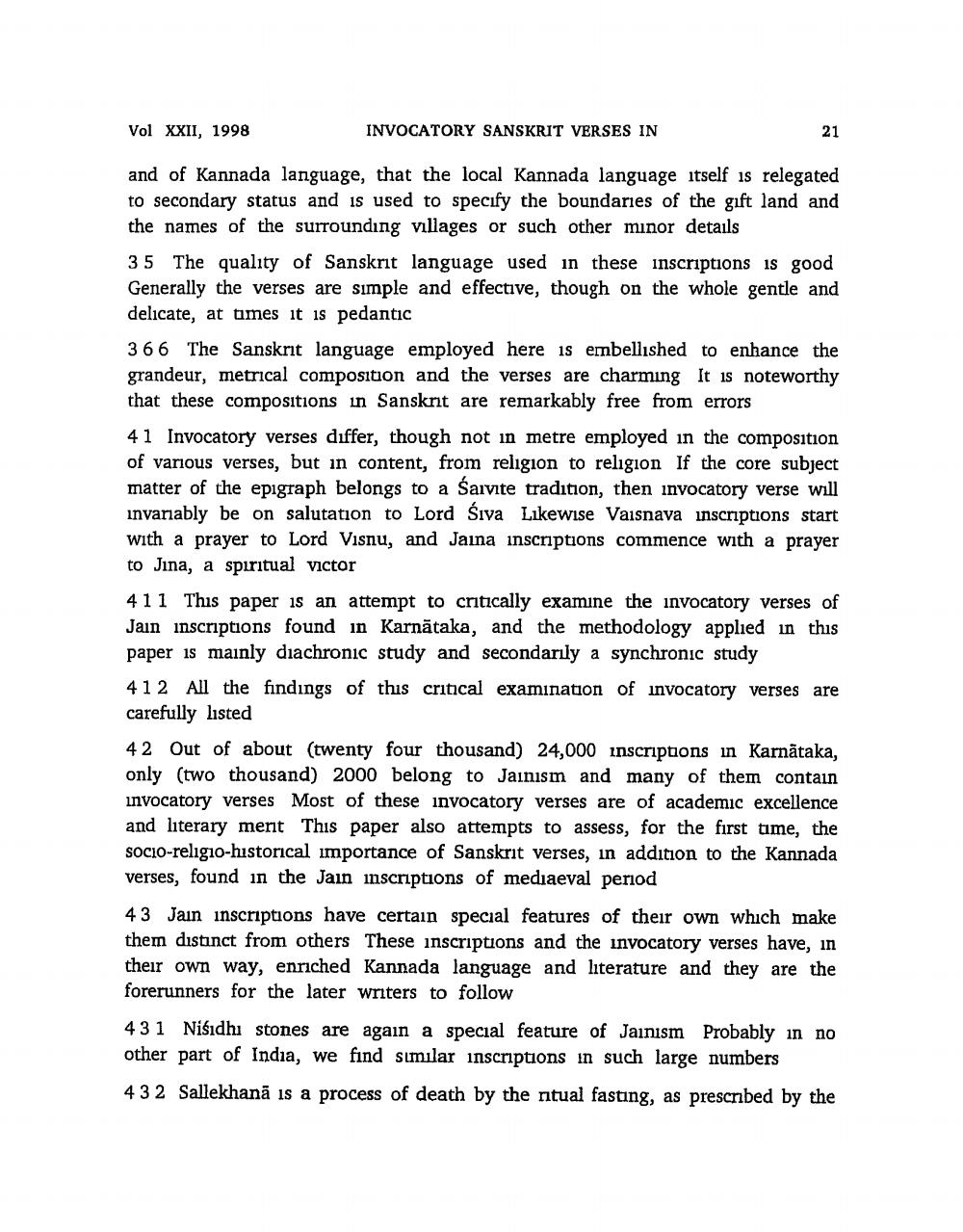________________
Vol XXII, 1998
INVOCATORY SANSKRIT VERSES IN
21
and of Kannada language, that the local Kannada language itself is relegated to secondary status and is used to specify the boundaries of the gift land and the names of the surrounding villages or such other minor details 35 The quality of Sanskrit language used in these inscriptions is good Generally the verses are simple and effective, though on the whole gentle and delicate, at times it is pedantic 366 The Sanskrit language employed here is embellished to enhance the grandeur, metrical composition and the verses are charming It is noteworthy that these compositions in Sansknt are remarkably free from errors 41 Invocatory verses differ, though not in metre employed in the composition of various verses, but in content, from religion to religion If the core subject matter of the epigraph belongs to a Saivite tradition, then invocatory verse will invariably be on salutation to Lord Siva Likewise Vaisnava inscriptions start with a prayer to Lord Visnu, and Jaina inscriptions commence with a prayer to Jina, a spiritual victor 411 This paper is an attempt to critically examine the invocatory verses of Jain inscriptions found in Karnātaka, and the methodology applied in this paper is mainly diachronic study and secondarily a synchronic study 412 All the findings of this critical examination of invocatory verses are carefully listed 42 Out of about (twenty four thousand) 24,000 inscriptions in Karnataka, only (two thousand) 2000 belong to Jainism and many of them contain invocatory verses Most of these invocatory verses are of academic excellence and literary mert This paper also attempts to assess, for the first time, the SOCIO-religio-historical importance of Sanskrit verses, in addition to the Kannada verses, found in the Jain inscriptions of mediaeval period 43 Jain inscriptions have certain special features of their own which make them distinct from others These inscriptions and the invocatory verses have, in their own way, enriched Kannada language and literature and they are the forerunners for the later writers to follow 431 Niśıdhi stones are again a special feature of Jainism Probably in no other part of India, we find similar inscriptions in such large numbers 432 Sallekhanā is a process of death by the ntual fasting, as prescribed by the




